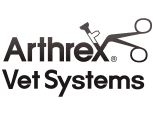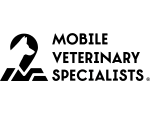Due to recent advances in veterinary medicine, more options are now available when it is time to have your pet “spayed.” The surgery may be done in a traditional “open” manner or through minimally invasive means using laparoscopy. Procedures that may be performed include ovariohysterectomy, the surgical removal of the uterus and ovaries, or ovariectomy, when only the ovaries are removed. All of these procedures are performed under general anesthesia. Most primary care veterinarians recommend performing these procedures at approximately six months of age, but they can be performed on dogs of any age. They may be elective, or a treatment for a disease process.
The following are reasons to consider having your pet spayed:
- Vastly decreased chance for development of mammary (breast) cancer
- 200 times less likely if ovariohysterectomy performed before the first estrus (heat cycle)
- Eliminates chance of developing a pyometra (infection of the uterus)
- Eradicates unwanted estrous behavior and associated bleeding
- Eliminates unwanted pregnancies and risks of dystocia (difficult birth)
Most young healthy pets being spayed do not have any clinical signs. However, if your pet has a disease of her reproductive tract, such as pyometra, dystocia, or ovarian or uterine cancer, she may show signs associated with this disease process.
Medical workup for a routine ovariohysterectomy or ovariectomy generally consists of:
- complete physical examination
- additional tests for older dogs may include a complete blood count, serum chemistry, and urinalysis
- abdominal radiographs (x-rays) and possibly ultrasound may be necessary in dogs presenting with pyometra or dystocia
Laparoscopic Surgery
Procedures vary, but generally, 2-3 small (usually less than one inch long) incisions are made in the abdomen for insertion of a laparoscope and instrument ports. The abdomen is distended with carbon dioxide gas and the laparoscope is introduced to visualize the reproductive tract. Instruments are used to grasp and manipulate the reproductive tract through the instrument ports. Blood vessels can then be ligated with clips, suture, or a vessel-sealing device. Ovariectomy or ovariohysterectomy can be performed using this method. After removal of the reproductive tissue, closure of the portal sites is performed.
Open Surgery
The surgical incision is usually made on the abdominal midline, although a flank approach can be used. The length of the incision varies depending on the size of your pet and other factors. The ovaries and/or the uterus are exteriorized and ligatures are tied around blood vessels supplying the portions of the reproductive tract to be removed. Following removal of the ovaries and/or uterus, the incision is closed in layers, including the body wall, subcutaneous tissue, and skin.
Ovariohysterectomy vs. Ovariectomy
Ovariohysterectomy has been the most common “spay” procedure performed in the United States for many years. However, recent literature has shown no long-term difference in outcome between pets receiving ovariectomy or ovariohysterectomy. Based on those findings, the two procedures can be considered essentially equivalent to one another.
Aftercare includes:
- house rest, with no running, jumping or rough play for two weeks following surgery
- pain medications are often prescribed for several days following surgery
- An Elizabethan collar may be necessary to prevent licking of the surgical wound.
Further treatments may be necessary following ovariohysterectomy for treatment of pyometra or other diseases.
Ovariohysterectomy can lead to mild complications such as:
- incisional bruising,
- swelling
- infection
More serious complications such as hemorrhage and urinary obstruction are rare but can be life threatening. Ovariohysterectomy can be more difficult in larger or obese pets and may be associated with more complications. Urinary incontinence reported after surgery, which may require lifelong medical treatment.
The prognosis is excellent for routine ovariohysterectomy and ovariectomy. The prognosis is more variable following ovariohysterectomy for pyometra and dystocia.











